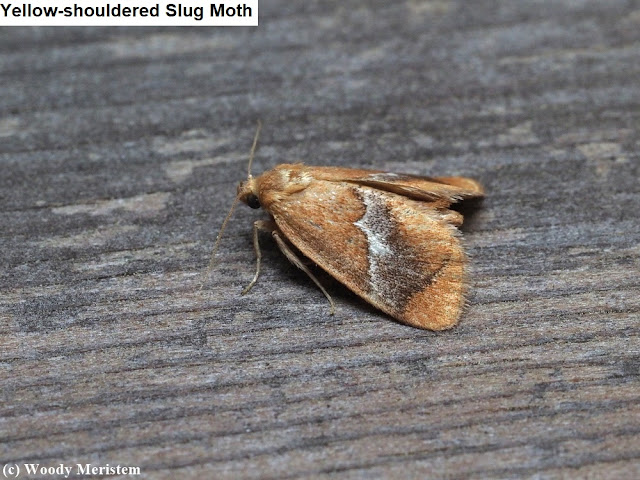National Moth Week was July 20-28, 2024, a time to appreciate and enjoy moths in all their diversity and beauty.
We turn
on an outside light, go back inside
for an hour or so and then look at the insects the light
attracted, especially the moths. The moths spend the night in the refrigerator to slow them down, they're photographed when I release them in the morning. The four day-flying moths in this post were photographed in the field.
You can do that too; unless it’s raining hard, do that on any midsummer’s night and you’ll attract moths, Some will be drab (tan or gray), others will have intricate patterns or be very colorful.
Take a photo of any of the moths you find interesting and do an internet search using your photo and chances are you’ll be rewarded with it’s name and information about the species. And the names we humans have given them are almost as colorful as the moths themselves.
Here are a few of the moths from our front door light this year –
Hopefully you enjoyed these photos and decide to try observing moths yourself – just don’t forget to turn out the light each night so the moths can go about their lives.

.JPG)
.JPG)
.jpg)
.JPG)
.JPG)

.JPG)
.JPG)
.JPG)
.JPG)
.JPG)
.JPG)
.JPG)
.JPG)
.JPG)

.jpg)
.JPG)
-DeNoiseAI-standard.JPG)
.JPG)
.JPG)
.JPG)
.JPG)
.JPG)
.JPG)
.JPG)
.JPG)
.JPG)
.JPG)
.JPG)
.JPG)
.JPG)
.JPG)
.JPG)
.JPG)
.JPG)





















